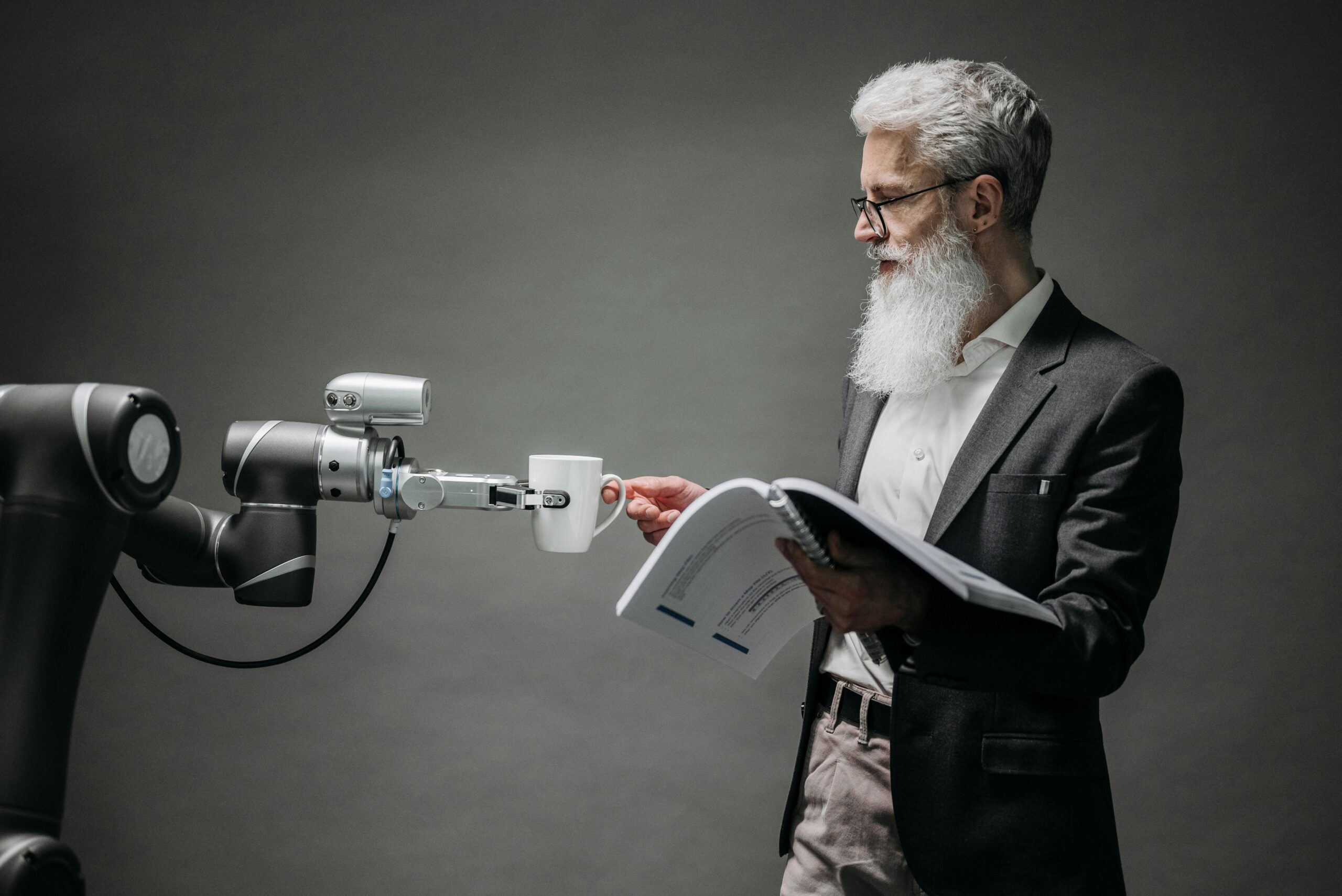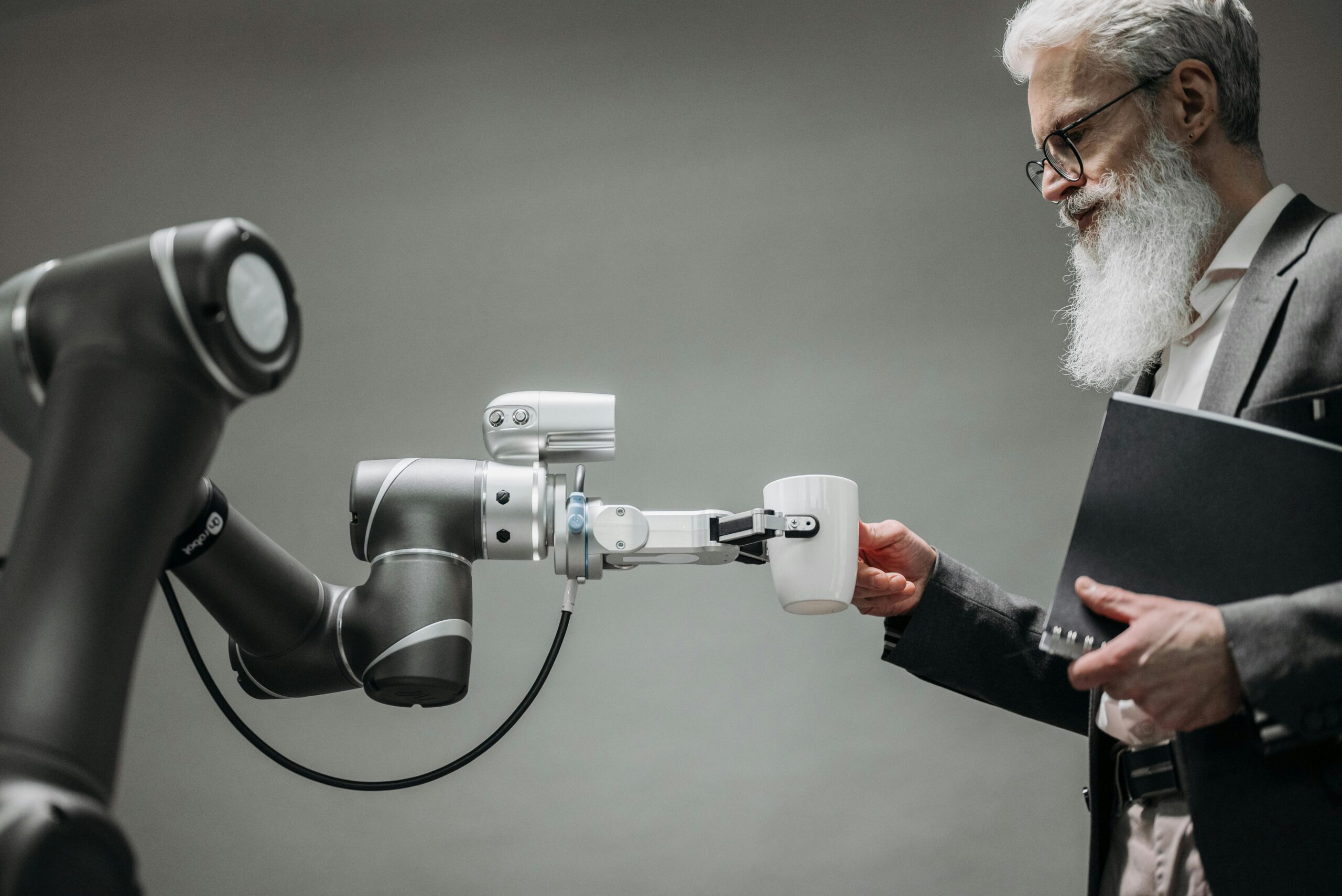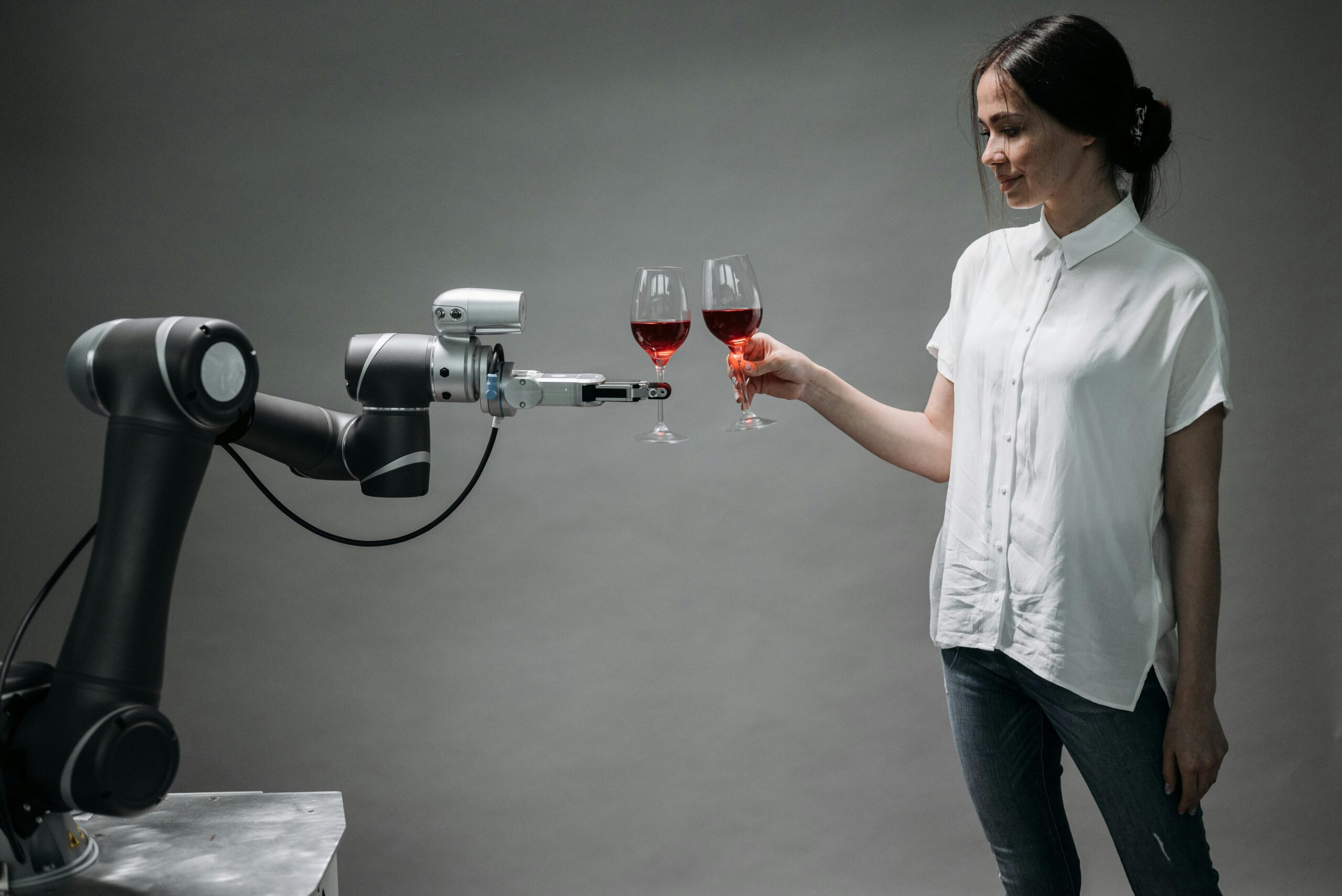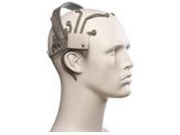
Apr
AI’s Impact On Critical Thinking and Learning – What Studies Are Saying So Far
jerry9789 0 comments artificial intelligence, Burning Questions
Generative AI and Critical Thinking
On our last blog, we touched on two studies suggesting that Generative AI is making us dumber. One of those studies, which was published in the journal Societies, aimed to look deeper into GenAI’s impact on our critical thinking by surveying and interviewing over 600 UK participants of varying age groups and academic backgrounds. The study found “a significant negative correlation between frequent AI tool usage and critical thinking abilities, mediated by increased cognitive offloading.”
Cognitive offloading refers to the utilization of external tools and processes to simplify tasks or optimize productivity. Cognitive offloading has always raised concerns over the perceived decline of certain skills — in this instance, the dulling of one’s critical thinking. In fact, the study found that cognitive offloading was worse with younger participants who demonstrated higher reliance on AI tools and less aptitude when it comes to their own critical thinking skills.
Conversely, participants with higher educational backgrounds showed better command of their critical thinking no matter the degree of AI usage, putting more confidence in their own mental acuity than the AI-based outputs. Aligning with our advocacy for the “appropriate use of AI,” the study emphasizes the importance and appreciation of high-level human thinking over thoughtless and unmitigated adoption of AI technology.
Copyright: jambulboy
Generative AI and Learning
In truth, a number of earlier studies have revealed that the arbitrary adoption of AI tools can be detrimental to one’s ability to learn or develop new skills. A 2024 Wharton study on the impact of OpenAI’s GPT-4 demonstrated that unmitigated deployment of GenAI fostered overreliance on the technology as a “crutch” and led to poor performance when such tools are taken away. The field experiment involved 1,000 high school math students who, following a math lesson, were asked to solve a practice test. They were divided into three groups, with two of these groups having access to ChatGPT while the third had only their class notes. One group of students with ChatGPT performed 48 percent better than those without; however, a follow-up exam without the aid of any laptop or books saw the same students scoring worse by 17 percent than their peers who had only their notes.
What about the second group with the GenAI tutor? They not only performed 127 percent higher than the group without ChatGPT access on the first exam, but they also scored close to the latter during the follow-up exam. The difference? Sometime down the line of their interactions, the first group with ChatGPT access would prompt their AI tutor to divulge the answers, resulting in an increased reliance on GenAI to provide the solutions instead of making use of their own problem-solving abilities. On the other hand, the other group’s AI tutor version was customized to be closer to how real-world and highly effective tutors would interact with students: it would help by giving hints and providing feedback on the learner’s performance, but it would never directly give the answer.
Similar tests with a GenAI tutor in 2023 studied the same issue of AI dependence and the value of careful deployment of AI tools. Khanmigo, a GenAI tutor developed by Khan Academy, was voluntarily tested by Newark elementary school teachers, who belong to the largest public school system in New Jersey. They came back with mixed results, with some complaining that the AI tutor gave away answers, even incorrect ones in some cases, while others appreciated the bot’s usefulness as a “co-teacher.”
Other studies regarding the effectiveness of AI tutors have shown increases in learning and student engagement. These studies have also shown that GenAI can help reduce the time it takes to get through learning materials compared to traditional methods. One study that extolled the benefits of GenAI tutors involved Harvard undergraduates learning physics in 2024, and similar to the third group in the Wharton research, the AI was prevented from directly providing the answer to students. It would guide the student throughout the learning process one step at a time, providing incremental updates of the student’s progress, but never outright telling them the answer. There are merits to the idea of Generative AI as a teaching assistant, but it serves students better when it is positioned to engage one’s attention and abilities rather than induce dependence on it to generate the answers.
Copyright: Only-shot
Can We Use GenAI Without Making Us Dumber?
These studies shed light on how we should approach AI solutions and development, whether the end product is being deployed in learning, productivity or other relevant applications. Beyond thoughtful planning and considerations on how AI tools would be deployed, there should be a focus on engaging the human faculties involved, with safeguards empowering man throughout the entire process instead of letting the machine take over the process wholesale. AI technology is developing rapidly, but we can keep pace and remain reasonable as long as human engagement and empowerment is kept at the core of its utilization and adoption.
Amid contemporary fears that anyone could be replaced anytime by AI, these studies highlight the importance of how vital and interconnected the human factor is to the effective deployment and development of AI tools. One could be content with the constant and consistent output AI tools generate, but progress is only possible when competent human minds are involved in the process and direction. Students can easily find answers with AI tools at their disposal, but why not advance their understanding of how solutions are formed with engaging and relatable AI-powered educational experiences? High-level human thinking grounded by values and experience can’t be replicated by machines, and perhaps there’s no better time than now to incorporate it into the heart of the AI revolution.
While AI development hopes that optimization and automation free the human mind to go after bigger and more creative pursuits, we here at Cascade Strategies simply hope that humanity emerges from all of these advancements more and not less than what it as we entered the AI revolution.
Additional Reading:
Why AI is no substitute for human teachers – Megan Morrone, Axios
AI Tutors Can Work—With the Right Guardrails – Daniel Leonard, Edutopia
Featured Image Copyright: jallen_RTR
Top Image Copyright: danymena88

Mar
Are We Getting Dumber Because of AI?
jerry9789 0 comments artificial intelligence, Burning Questions
Is Generative AI making us dumber? Two recent studies suggest so.
A study published early this year titled “AI Tools in Society: Impacts on Cognitive Offloading and the Future of Critical Thinking” showed that growing dependence on AI could lead to a decline in critical thinking. Submitted by Michael Gerlich of the SBS Swiss Business School, the study was based on surveys and interviews of 666 UK participants from different age groups and academic backgrounds. The problem is more pronounced with younger participants who demonstrated increased reliance on AI to perform routine tasks and scored lower when it comes to critical thinking than their older counterparts.
More recently, a study by Microsoft and Carnegie Mellon University shared similar findings that the more workers depended on AI for their work, the duller their critical thinking becomes. The study surveyed 319 knowledge workers who used generative AI at least once a week and examined how and when they apply AI or their critical skills when performing tasks. The more faith the participant put in genAI to produce acceptable outcome, the less they use their critical thinking skills. On the other hand, participants who have higher confidence in their abilities than that of AI’s are found to exercise their critical thinking more out of concerns over unintended and overlooked machine output.
Copyright: Tara Winstead
What is Cognitive Offloading?
Both studies are linking overreliance on AI with cognitive offloading, which is when someone utilizes external tools or processes for completing tasks, resulting in their reduced engagement with deep, reflective thinking. Yes, AI is improving efficiency and saves time and financial costs, but these studies are suggesting that it could make humans less smart over time.
However, cognitive offloading isn’t new as it existed in a variety of forms throughout time, such as using a calculator instead of performing mental mathematics or simply making a grocery list instead of memorizing all the items you need to buy. It’s no surprise then that there are questions about the merits of the studies, such as self-reporting bias or how critical thinking was measured. Forbes suggests that AI isn’t making us dumb but lazy, while another emphasizes that in order for there to be harm to one’s critical thinking abilities, one must have critical thinking to begin with.
Copyright: Pavel Danilyuk
Rethinking AI Development
Nevertheless, these studies contribute to the conversation regarding the direction of genAI development, now with the nuance of being mindful and respectful of its human users’ intelligence and faculties. Recommendations include rethinking AI designs and processes which incorporates and engages human critical thinking. They’re helping bring back focus to AI serving as a tool augmenting instead of overtaking human capabilities.
For us at Cascade Strategies, we’re glad that these studies have renewed awareness and appreciation of human intelligence and creativity. Our world could’ve easily devolved into settling for more of the same output so it pleases us to learn that more voices are becoming advocates and proponents not only of the “appropriate use of AI” but also of high level human thinking.
Featured Image Copyright: Alex Knight
Top Image Copyright: Tara Winstead

Dec
What’s Going On With Consumer Startups In The Age of AI?
jerry9789 0 comments artificial intelligence, Brandview World, Burning Questions
Enterprise Over Consumer
The dawn of the Internet era witnessed the emergence of huge consumer companies like Amazon while the advent of mobile technology had Uber and the like on the forefront. However, it appears that the tide has changed in this new age of AI with startup founders and investors appearing to favor enterprise over consumer efforts.
This observation is the school of thought on which the PitchBook article “Where are all the consumer AI startups—and why aren’t VCs funding them?” was based and written. It came from the author’s takeaway from her two-day experience attending the recent startup conference Slush in Helsinki where venture capitalists expressed high interests in AI startups as expected, but notably for B2B over B2C.
She further adds that PitchBook data has venture funding for B2B AI startups is at $16.4 billion this year while B2C is only at $7.8 billion. But with the consumer AI market estimated to be doubly larger than its enterprise counterpart by 2032, she posts the question if there is a lack of B2C startups, or if VC are simply just not funding consumer AI companies?
Copyright: fauxels
The Challenges of B2C AI
To start with, it simply seems that investors generally are not keen on consumer startups especially with the VC downturn starting in 2022. A combination of factors such as rising inflation, higher interest rates and valuation markdowns have created a harsh macroeconomic climate for B2C AI to thrive. And when stable profitability is the bottom line, investors would understandably be more attractive to the steady and predictable revenues generated by B2B AI companies over the unsustainable and erratic B2C AI business models.
Jordan Steiner, CEO and developer capital/chief strategy officer at Monadical, shared some unfavorable characteristics he noticed from B2C AI companies he noticed on a LinkedIn post. Most B2C AI ideas these days he found are easily replicable. When competitors can not only easily clone but also improve on an existing idea, this can hamstring any company’s chances from dominating the space or becoming an incumbent. And when these factors create a cycle where users chase the newest cool product and churn when the novelty wears off, it illustrates just how unsustainable B2C AI business models are, especially in this period of time when user acquisition costs are higher.
And when a business model banks more on desirability instead of addressing pain points, there is a continuous struggle to iterate and produce new features or content. This then requires a consistent and ongoing understanding of consumer trends, necessitating access to consumer data and insights that a startup might not have at the beginning and need to build over time, primarily with user acquisition. Incumbent B2C companies would most likely have heavily invested on acquiring consumer data and insights to maintain and defend their longstanding piece of the market.
So why do B2B AI investments seem the more attractive prospects then at this time? By prioritizing pain points over desirability, then selling to and maintaining long-term relationships with key industry players, B2B AI companies are able to eventually build desirability to attract more clients. B2B clients are also more likely to sign up and keep multi-year contracts and subscriptions which not only provide steady and stable revenue but also client data vital for product improvement and customization, helping not only build brand loyalty but also incumbency and low churn.
Copyright: Christina Morillo
Can A B2C AI Company Succeed?
Despite the aforementioned obstacles, there is room for a consumer AI startup to thrive. The PitchBook article suggests focusing “other spaces where big tech has less credibility, such as mental health solutions.” In the same article, Point72 Ventures managing partner Sri Chandrasekar highlights differentiation as being a key characteristic for a B2C AI company to help close investments, this uniqueness holding off attempts to be replicated while tapping into that factor of desirability that excites and engages consumers while attracting investors.
If anything else, a consumer AI startup might need to bootstrap it more than just having an idea to attract investments. Demonstrating and executing on your unique position not only proves your idea as sound and feasible but you are able to get your B2C AI company past the first step towards progressing to the potentially higher rewards offered in this space.
Featured Image Copyright: Pavel Danilyuk
Top Image Copyright: Photo By Kaboompics.com/Karolina Grabowska

Nov
“Humanizing” Market Research with AI
jerry9789 0 comments artificial intelligence, Brand Surveys and Testing, Burning Questions
The Boon and Bane of AI
The increasing and widespread utilization and demand for Artificial Intelligence have been met with both excitement and reservation. Excitement for the possibilities AI’s implementation unlocks, oftentimes steps ahead of the curve or beyond expectations; reservations not only stemming from the risks over its unethical and unchecked use, but also the ramifications for human involvement now that intelligent machines represent an optimized and economical choice for completing tasks and processes. But can there be a middle ground somewhere where AI and human engagement coexist and collaborate?
The “Humanization” of Market Research
“Capturing the Human Element in an Artificial World” by Eric Tayce (Quirk’s Marketing Research Review, Sep-Oct 2024) posits that such a midground is possible, especially in market research. An industry that’s all aware of its excessive dependence on technology to necessitate a push to “humanize” research data, it saw a dramatic shift from “data-intense tomes and clinical-sounding slide titles” to “streamlined, narrative-style reporting” focused on “the unique motivations and experiences that drive customer behaviors.” The latter “humanized” approach is able to communicate business goals while connecting and engaging on an emotional level. However, generative large language models (LLMs) cast a shadow on this “humanized” approach by offering synthetic outputs and progressive algorithms.
But combining both AI and efforts to “humanize” research can result in the whole being greater than the sum of its parts. The article shared that AI can help collect more unstructured data from survey research by employing conversational chatbots to create a natural, richer experience for the respondent. That unstructured data in turn can potentially provide more organic, more human insights with AI-powered algorithms, an undertaking that was once considered too complex or time-consuming. AI can also build multifaceted perspectives through context by linking survey records with a broad range of data sources. And in lieu of traditional static deliverables, data and insights can be presented in a vibrant and interactive narrative by an AI-powered persona.
The “Human” Element
All these interesting prospects can only be achieved when AI is tempered by high-quality human input and thoughtful implementation considerate of ethical and moral implications. Aside from AI mistakes and hallucinations existing, AI has been observed to be too helpful and excitable. Human oversight and input remain key in ensuring AI models are trained, fine-tuned and grounded with quality and relevant datasets while having enough flexibility to engage appropriately in open-ended interactions.
There’s no denying just how transformative AI is in reshaping industries today, including market research. Despite concerns of machines taking over jobs, one can look at it with the perspective of roles changing and adapting. AI with its generative and synthetic capabilities can elevate the “humanization” of market research, but to get to that point we simply can’t forget that humans are indispensable to the whole process.
Featured Image Copyright: GrumpyBeere
Top Image Copyright: Darlene Anderson

Aug
Can Synthetic Respondents Take Over Surveys?
jerry9789 0 comments artificial intelligence, Burning Questions
What Are Synthetic Respondents?
AI has increased operational efficiency by streamlining knowledge bases and shortcutting processes so it’s no surprise people and companies are looking for more ways for its application. For market research, one curious consideration is whether it could take over surveys, essentially by replacing actual respondents with synthetic respondents.
Also known as virtual respondents, digital personas, and Virtual Audiences, synthetic respondents are individual profiles constructed by Large Language Models (LLMs) from real or simulated data. Ideally, the data or descriptions used to generate these profiles come from previously conducted surveys and are combined with individual-level demographics, attitudes and behaviors.
Using these synthetic respondents over real respondents could benefit your research with speed, accuracy and cost savings, at least according to their advocates. Basically, you just need to conduct one survey and from the profile description or data you gathered from the actual respondents, you’re able to generate results from the constructed individuals over and over for succeeding studies and research.
Testing Synthetic Respondents
While synthetic respondents could accurately represent real respondents, relying exclusively on the results from these AI-based individuals may not be entirely beneficial. A webinar hosted by Radius Global took a closer look at the potential of AI-generated synthetic respondents through three case studies of quantitative concept testing, quantitative communications research, and qualitative communications research.
Aggregate results for the concept tests involving game controllers indicate somewhat strong similarities between the results of the real and synthetic respondents. This extends to the results from the quantitative communications research when it comes to the believability of statements on the benefits of milk, although there were some differences. The differences were much more pronounced though when it comes to surprise over the same statements, and there was incongruence when considering how each statement could possibly increase milk consumption.
The qualitative communications research was seeking in-depth insights into women’s needs, perceptions, and preferences for running a race or marathon, with the feedback gathered meant to be used for creative content. Personas were constructed from the profiles of six women aged between 18 and 64 years old who ran at least once in an average week. They had an LLM assume each persona to allow a comparison between findings from real participants to synthetic respondents.
They found that while both real and synthetic respondents have somewhat similar responses when it comes to functional aspects as goals for women in general pursuing fitness, the AI responses lacked emotional expressions. There are also little differences in the synthetic respondents’s responses despite having different profiles, and there was even a lack of subtle differences.
As for concerns among women who are aspirational marathon runners, the synthetic personas were consistent in their responses while the real respondents provided more nuances, variety, and perspectives more prevalent among women.
Synthetic Respondents Vs. Real Respondents
Synthetic respondents appear to be useful if you’re evaluating existing ideas and concepts; however, if you’re looking for “breakthroughs” or essentially new insights you would’ve never arrived at had you not performed the case study or research, you would need to engage with real respondents, relying exclusively on their results or combining them with that of synthetic respondents. Yes, there could be cases where synthetic respondents could be used, but the results must be extensively validated. It would also require increasing the efficiency of how data used to construct these individuals are analyzed in addition to enhancing the quality of the data and information gathered for these profiles through thorough screening, intelligent probing, and smart choice models.
There is a place for synthetic respondents in market research, but as another tool in a researcher’s disposal. They won’t be taking over surveys nor replacing actual respondents wholesale anytime soon it seems, as that elusive “Eureka” moment researchers seek are inherently tied with the nuances and perspectives of human emotion and experience you just simply couldn’t construct.
Photo courtesy of Pavel Danilyuk

Jul
AI In Market Research: The Story So Far – Chapter 3: A Glimpse Into A Future with AI
jerry9789 0 comments artificial intelligence, Burning Questions
This is the third installment in our series on AI webinars. The inspiration for this series is a simple question about what these AI seminars are saying. There are hundreds of these seminars floating about, all based on the premise that AI technology is here to stay, people are curious about it, and they want to know how it will affect their lives.
We asked one of our staff members to attend several of these AI webinars in pursuit of the answer to this question: what are the AI webinars really saying? What are the common themes, if any? While the first and second chapters focused on AI’s ubiquity and limitations respectively, this third installment focuses on the replacement of humans and human work.
Will Jobs Be Lost Because of AI?
AI is a threat to most jobs including those in the market research industry but this is most especially true with any repetitive or routine work grounded by established knowledge or processes. AI provides the advantages of streamlining your knowledge base and shortcutting processes. If you’re on the process side and you fail to embrace AI, clients might find you costlier and less optimized.
The market research industry had already learned this lesson in the early 2000s when the big companies didn’t take online research seriously. They subsequently found themselves trying to catch up some years later after the widespread acceptance and adoption of online research. Whoever waits too long or neglects to embrace the newest tool would most likely fall behind as the industry shifts towards AI-driven processes.
What are the AI webinars saying about Human Replacement?
This doesn’t necessarily mean that humans would be fully replaced and displaced by AI in market research. AI is, after all, a tool. All tools revolutionize optimization but optimization by definition doesn’t make things better. AI will revolutionize things, but it is not the big revolution that will make everything different.
To illustrate that last point, a question was raised in one of the webinars about the possibility of a data collection tool that can replace surveys. There wasn’t a definitive answer given by the panelists since it’s more of a question of what surveys would actually look like. It would depend on what is wanted to be accomplished, the type of information sought, and how they would engage and elicit reactions.
The subject of AI-powered market research alone attracts investors. Embracing AI would not only optimize your market research processes but it would also add value to your insights. Having said that, AI places everybody on the same playing field, except those who recognize and seize the opportunity to experiment with AI are able to gain an edge. The key would be to build on experience rather than purely on the thirst for innovation; try to be at the front of things, but don’t try to be the first one. Try to find a good balance by going with the flow while making smart moves and decisions.
It’s been noted that the profile of the researcher of the future is a little bit more techy and into IT integration. New business intelligence leaders today have IT backgrounds, and this is different from two decades ago. Even in a world with AI-based market research, there would be room for the human factor that adds value from experience — something AI won’t be able to replace.









































